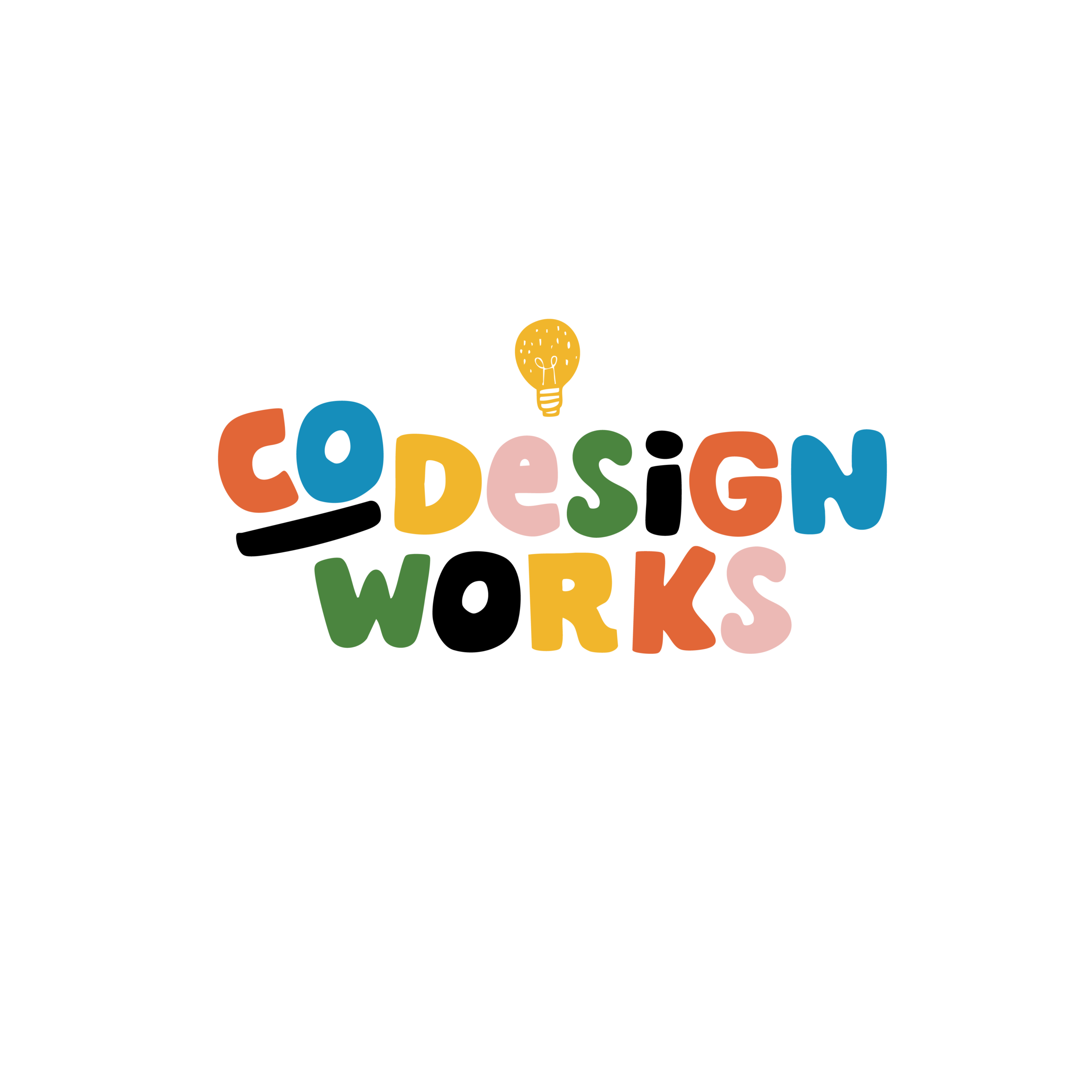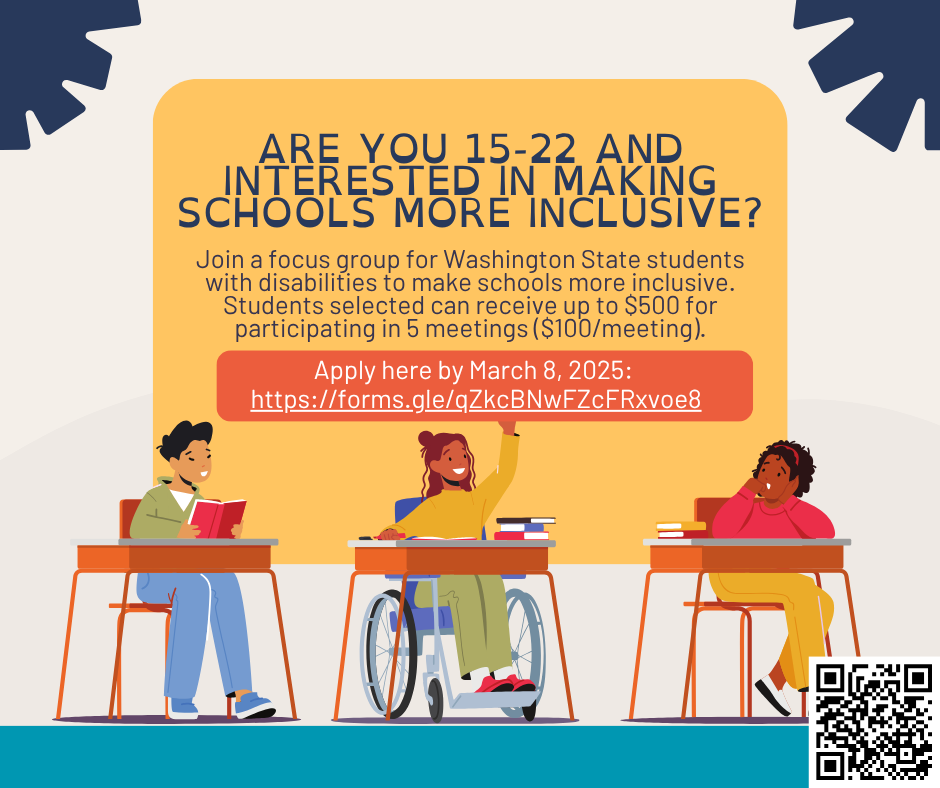Youth CoDesign Project: Designing Strategies for Inclusion
Explore Our Youth CoDesign Project: Collaboration with OSPI
Learn how Washington State students with disabilities, ages 15-22, collaborated in Winter-Spring 2025 through CoDesign Works and OSPI’s Inclusionary Practices Technical Assistance Network (IPTN) to create powerful inclusion-focused materials that come from their own perspectives on navigating the social and academic experiences of being young adults. Thanks to Alexza (Wenatchee), Braxton (Ridgefield), Danny (Seattle & Walla Walla), Faith (Seattle), Lily (Shoreline), Malachi (Kent), Malley (Tacoma), Mikayla (Monroe), and Simeon (Tacoma).



Youth CoDesign Project Summary & Structure
Using design justice and a liberatory design approach, CoDesign Works’ Principal and Founder Carrie Basas convened disabled students over five weeks to find ideas to increase inclusion for students with intellectual and developmental disabilities and Black students with disabilities. These groups have faced lower rates of inclusive schooling compared to other disabled students, even with statewide efforts.
At the core of codesign is the idea that communities most affected know best how to move forward. When discussing disability without including students with disabilities, we miss chances for new ideas and understanding. To respect the valuable knowledge of people with disabilities, CoDesign Works gave stipends to participants.
Timeline
Steps in Brief:
Prep: Design & implementation of accessible recruitment process for disabled youth
After Outreach: Review & Selection
Wk 1: Kickoff — Introductions & Relationship-Building
Wk 2: Seeing the System
Wk 3: Imagining & Empathizing
Wk 4: Building & Trying
Wk 5: Refining & Sharing

Have Questions about this Process? CoDesign Works is also offering a limited number of complimentary 15-minute codesign tune-ups or wondering sessions (think of them as quick office hours with a colleague) to IPTN partners.
Email Carrie Basas: carrie@codesignworks.com
Explore What the Youth Produced
Discover resources created by students with disabilities to promote inclusion in schools. We encourage you to share these resources widely on social media and in your communities. Print posters for your school or community space. Watch the students share their reflections about what they hope adults, their disabled and non-disabled peers, and policymakers will understand about inclusion and belonging.
Other hopes the students had for distribution included: school district newsletters, community centers, classroom discussions, teacher training programs, conferences, and mainstream media (including outlets focused on teens).
Inclusion Posters

See and share the low-contrast/low-stimulating (first half of each document) and higher-contrast/accessible posters the students designed that are intended to encourage inclusion. We'd love to know how you use these materials. The buttons below will open the full PDFs in a separate window.
Student Reflection Video

Below, you can listen to some of the participants reflect on what they want others to know about promoting inclusion. If you'd prefer to watch the video in a separate window, click on "Watch Video in a New Window." We also have a 1-minute highlight reel available.


